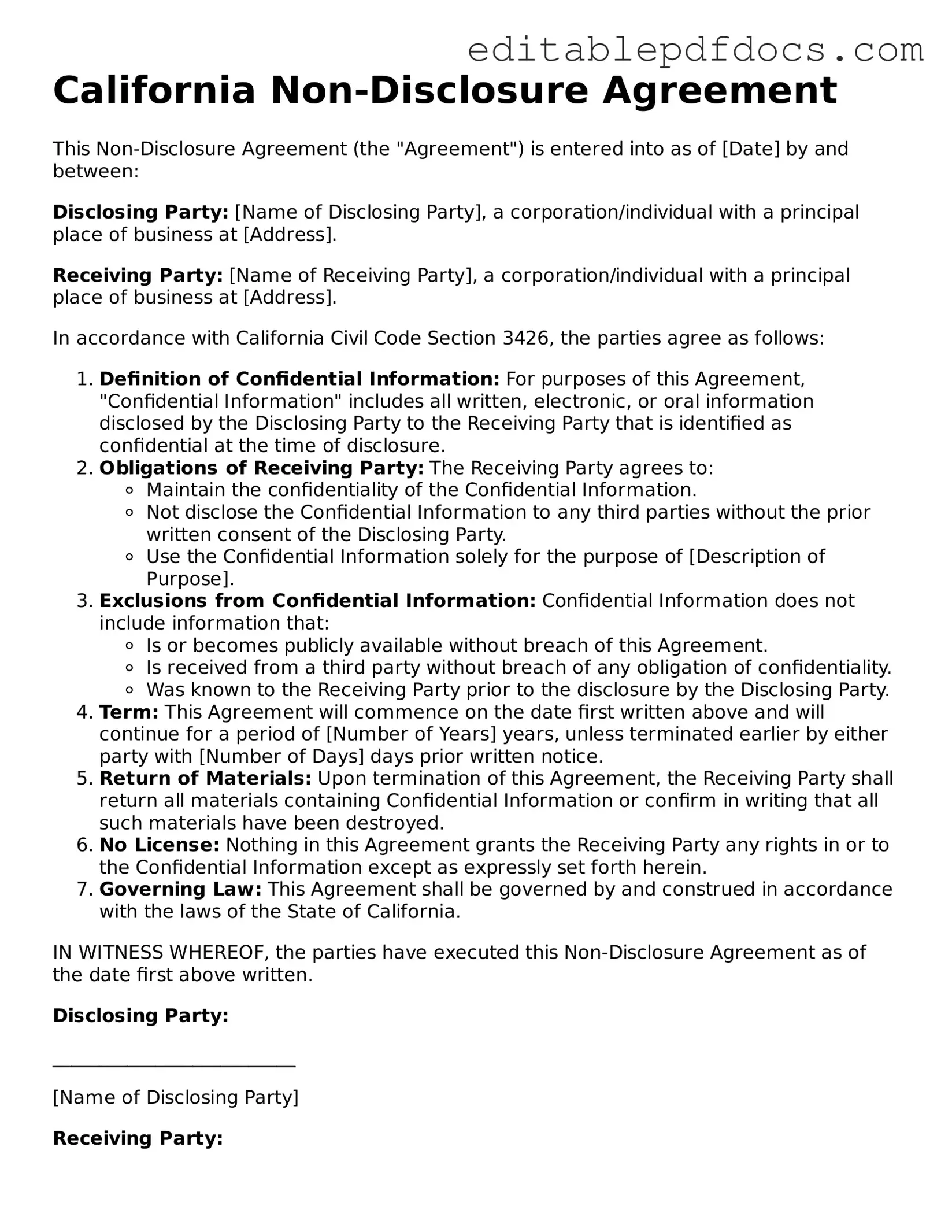Filling out a California Non-disclosure Agreement (NDA) can be a straightforward process, but there are common mistakes that many people make. These errors can lead to misunderstandings or even legal complications down the line. Awareness of these pitfalls is crucial for ensuring that your NDA serves its intended purpose.
One frequent mistake is failing to clearly define what constitutes "confidential information." Without a precise definition, the agreement may not protect the sensitive information adequately. This lack of clarity can lead to disputes about what information should remain confidential, which can undermine the entire agreement.
Another common error is neglecting to specify the duration of the confidentiality obligation. If the NDA does not state how long the information must remain confidential, it can create uncertainty. Parties may have different expectations about the timeline, leading to potential conflicts in the future.
Many individuals also overlook the importance of identifying all parties involved in the agreement. It’s essential to ensure that all relevant individuals or entities are named. If someone is not included, they may inadvertently disclose confidential information, which could jeopardize the protection intended by the NDA.
People often forget to include the consequences of breaching the agreement. Outlining the repercussions for violating the NDA can deter parties from disclosing sensitive information. Without these stipulations, there may be little incentive for compliance, leaving the disclosing party vulnerable.
Finally, a significant mistake is not having the NDA reviewed by a legal professional. While it might seem like a simple form, having an expert review the document can help catch any errors or omissions. This step can provide peace of mind and ensure that the agreement is enforceable and effective.
